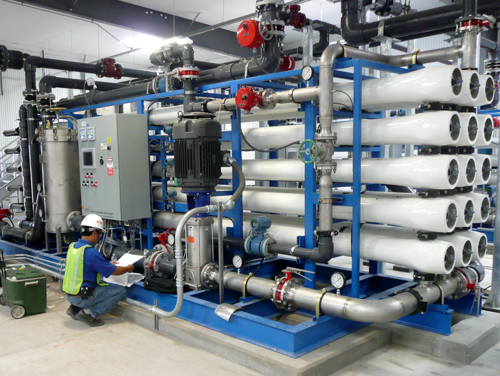Comprehensive PFAS Management Strategies for Water Sources
Just How PFAS Treatment Makes Certain Clean and Lasting Water
The visibility of PFAS, generally understood as "permanently chemicals," positions considerable difficulties to water high quality and public health and wellness. The ramifications of these treatments prolong beyond immediate health advantages; they elevate critical inquiries about long-lasting water management strategies that must be resolved to make certain a resistant future.

Comprehending PFAS Contamination
PFAS, or per- and polyfluoroalkyl compounds, have become a considerable environmental issue due to their prevalent frequency and determination in the environment. These artificial chemicals have been utilized in numerous commercial applications and consumer products, including non-stick kitchenware, water resistant garments, and food product packaging, because of their special properties such as water and grease resistance.
The contamination of soil and water sources by PFAS takes place primarily through industrial discharges, firefighting foam use, and seeping from garbage dumps. pfas management. When released, these substances are resistant to degradation, leading to their buildup in the setting. This perseverance elevates essential problems, as PFAS can take a trip fars away through groundwater and surface area water supply, impacting drinking water supplies and ecosystems

Wellness Dangers of PFAS
The perseverance of PFAS in the atmosphere raises considerable health problems for individuals revealed to these compounds. Research has linked PFAS direct exposure to various negative health impacts, consisting of immune system dysfunction, liver damages, and enhanced threat of certain cancers cells.
The ubiquity of PFAS in consumer items, such as non-stick kitchenware, water-repellent fabrics, and food packaging, more enhances the danger of exposure. Consuming water contaminated with PFAS is a substantial concern, as these chemicals can leach right into groundwater sources. Prone populaces, including kids and those living near commercial websites, might face elevated threats due to their establishing systems and possible for higher exposure degrees.
As recognition of these health dangers remains to expand, regulatory companies are starting to establish guidelines for PFAS levels in alcohol consumption water. Public health initiatives are crucial to alleviate direct exposure and protect communities from the long-lasting effects of these dangerous compounds.

Cutting-edge Treatment Technologies
Exactly how can we effectively deal with the obstacles positioned by PFAS contamination in water resources? Cutting-edge treatment see this page modern technologies are becoming essential services in the pursuit for clean water. These techniques concentrate on the removal or damage of per- and polyfluoroalkyl materials (PFAS), which are notorious for their determination in the setting.
One promising technique is adsorption making use of advanced materials, such as triggered carbon and ion exchange materials. These materials have shown effectiveness in capturing PFAS molecules from water. One more notable modern technology is membrane filtration, which uses nanofiltration and turn around osmosis to different impurities at the molecular level, thus offering an obstacle versus PFAS.
Additionally, advanced oxidation processes (AOPs) utilize strong oxidants to damage down PFAS substances right into safe results. This method is especially effective for dealing with highly contaminated water resources. Bioremediation methods, employing particular microbes, are additionally being discovered to degrade PFAS.
As research continues, hybrid systems that combine several modern technologies might use boosted performance, addressing the intricacies of PFAS contamination. The advancement Continue and application of these ingenious therapy innovations are necessary actions towards making sure the security and sustainability of our water resources.
Benefits of Reliable PFAS Therapy
Effectively dealing with PFAS contamination in water sources considerably boosts public wellness and environmental security. PFAS, commonly described as "for life chemicals," are immune to destruction and can collect in the body, leading to serious wellness risks such as cancer cells, liver damage, and body immune system dysfunction. By applying reliable therapy methods, areas can decrease direct exposure to these hazardous materials, eventually boosting the health end results of their populations.
Additionally, effective PFAS treatment adds to the preservation of regional communities. Infected water can adversely impact marine life and disrupt the fragile equilibrium of local environments. By ensuring clean water, therapy procedures safeguard biodiversity and maintain ecological stability.
Additionally, efficient PFAS removal can foster public confidence in water top quality. When areas are assured that their drinking water is devoid of dangerous impurities, it promotes a sense of security and health. This trust is important for neighborhood involvement and look at here now assistance for recurring water management initiatives.
Future of Water Sustainability
Amidst growing worries regarding water top quality and deficiency, the future of water sustainability hinges on innovative methods and joint efforts. As communities face the looming risks of pollutants like PFAS, the advancement of sophisticated therapy modern technologies is crucial. These technologies not just focus on the removal of hazardous compounds however likewise advertise the reuse and recycling of water, thus lowering overall need.
Additionally, reliable water governance plays a critical duty in making sure lasting methods. Policymakers should integrate clinical research study with regulative frameworks to establish clear guidelines for water use and treatment. Stakeholder engagement, including neighborhood neighborhoods and industries, fosters a feeling of shared responsibility and urges lasting practices throughout different industries.
Financial investment in facilities is also crucial; updating aging systems to integrate modern purification and purification methods can dramatically improve water quality. Furthermore, welcoming eco-friendly technologies, such as all-natural filtering systems, can provide environmentally friendly solutions.
Ultimately, the future of water sustainability hinges on a holistic strategy that integrates modern technology, policy, and area participation. By prioritizing these aspects, we can secure our water resources for generations to find, making certain clean and lasting water for all.
Final Thought
To conclude, the efficient therapy of PFAS is important for making sure tidy and sustainable water. By utilizing innovative modern technologies such as activated carbon adsorption, membrane purification, and progressed oxidation processes, communities can substantially lower the health dangers related to these impurities. Furthermore, the integration of these treatment techniques sustains ecological community protection and enhances biodiversity. Inevitably, durable PFAS therapy strategies contribute to long-term resilience in water management, promoting public count on water high quality and promoting sustainable methods.